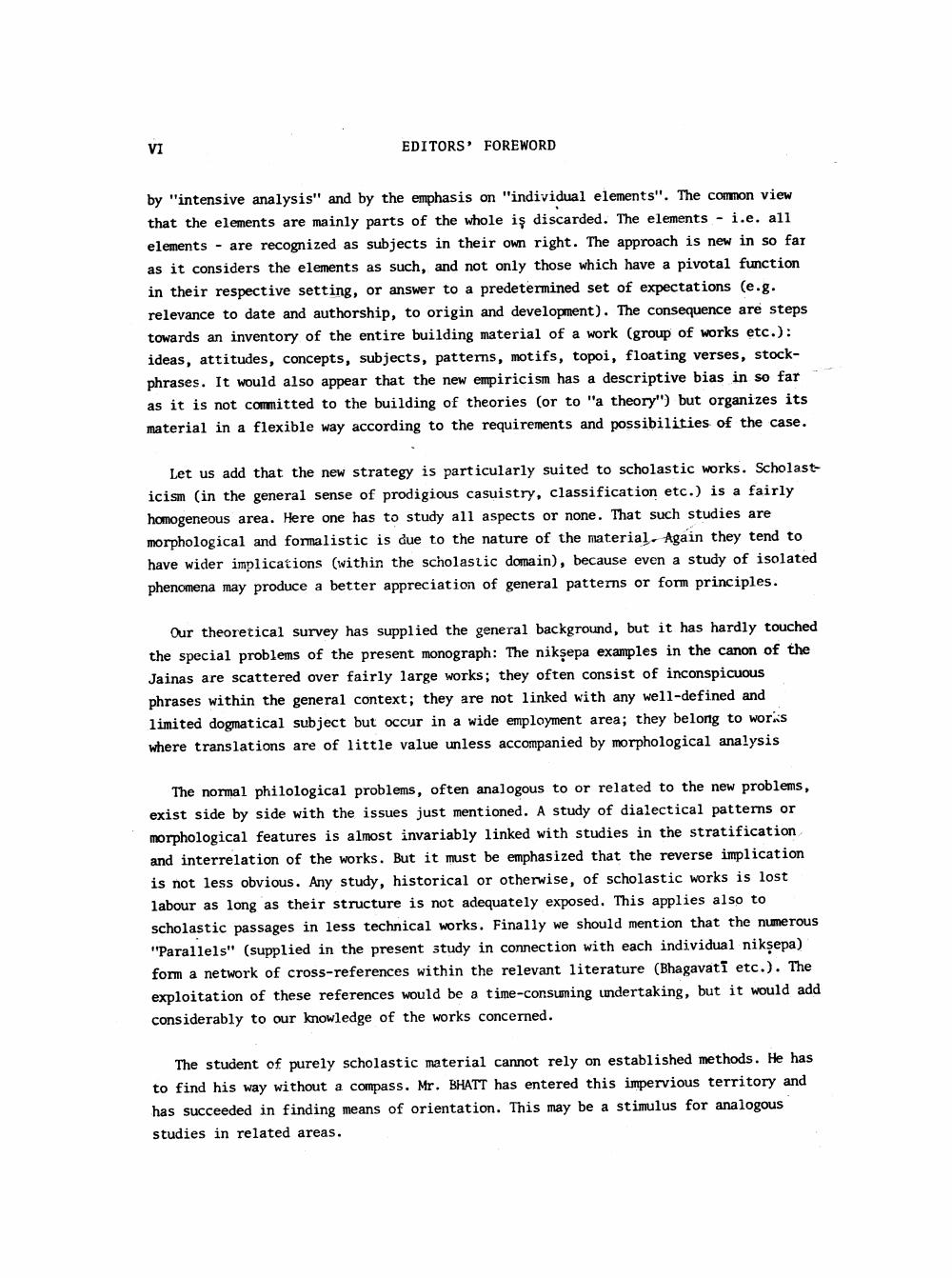Book Title: Canonical Niksepa Author(s): Bansidhar Bhatt Publisher: Bharatiya Vidya Prakashan View full book textPage 7
________________ EDITORS' FOREWORD by "intensive analysis" and by the emphasis on "individual elements". The common view that the elements are mainly parts of the whole is discarded. The elements - i.e. all elements - are recognized as subjects in their own right. The approach is new in so far as it considers the elements as such, and not only those which have a pivotal function in their respective setting, or answer to a predetermined set of expectations (e.g. relevance to date and authorship, to origin and development). The consequence are steps towards an inventory of the entire building material of a work (group of works etc.): ideas, attitudes, concepts, subjects, patters, motifs, topoi, floating verses, stockphrases. It would also appear that the new empiricism has a descriptive bias in so far as it is not committed to the building of theories (or to "a theory'') but organizes its material in a flexible way according to the requirements and possibilities of the case. Let us add that the new strategy is particularly suited to scholastic works. Scholasticism (in the general sense of prodigious casuistry, classification etc.) is a fairly homogeneous area. Here one has to study all aspects or none. That such studies are morphological and formalistic is due to the nature of the material. Again they tend to have wider implications (within the scholastic domain), because even a study of isolated phenomena may produce a better appreciation of general patterns or form principles. Our theoretical survey has supplied the general background, but it has hardly touched the special problems of the present monograph: The niksepa examples in the canon of the Jainas are scattered over fairly large works; they often consist of inconspicuous phrases within the general context; they are not linked with any well-defined and limited dogmatical subject but occur in a wide employment area; they belong to works where translations are of little value unless accompanied by morphological analysis The normal philological problems, often analogous to or related to the new problems, exist side by side with the issues just mentioned. A study of dialectical patterns or morphological features is almost invariably linked with studies in the stratification and interrelation of the works. But it must be emphasized that the reverse implication is not less obvious. Any study, historical or otherwise, of scholastic works is lost labour as long as their structure is not adequately exposed. This applies also to scholastic passages in less technical works. Finally we should mention that the numerous "Parallels" (supplied in the present study in connection with each individual niksepa) form a network of cross-references within the relevant literature (Bhagavati etc.). The exploitation of these references would be a time-consuming undertaking, but it would add considerably to our knowledge of the works concerned. The student of purely scholastic material cannot rely on established methods. He has to find his way without a compass. Mr. BHATT has entered this impervious territory and has succeeded in finding means of orientation. This may be a stimulus for analogous studies in related areas.Page Navigation
1 ... 5 6 7 8 9 10 11 12 13 14 15 16 17 18 19 20 21 22 23 24 25 26 27 28 29 30 31 32 33 34 35 36 37 38 39 40 41 42 43 44 45 46 47 48 49 50 51 52 53 54 55 56 57 58 59 60 61 62 63 64 65 66 67 68 69 70 71 72 ... 192
